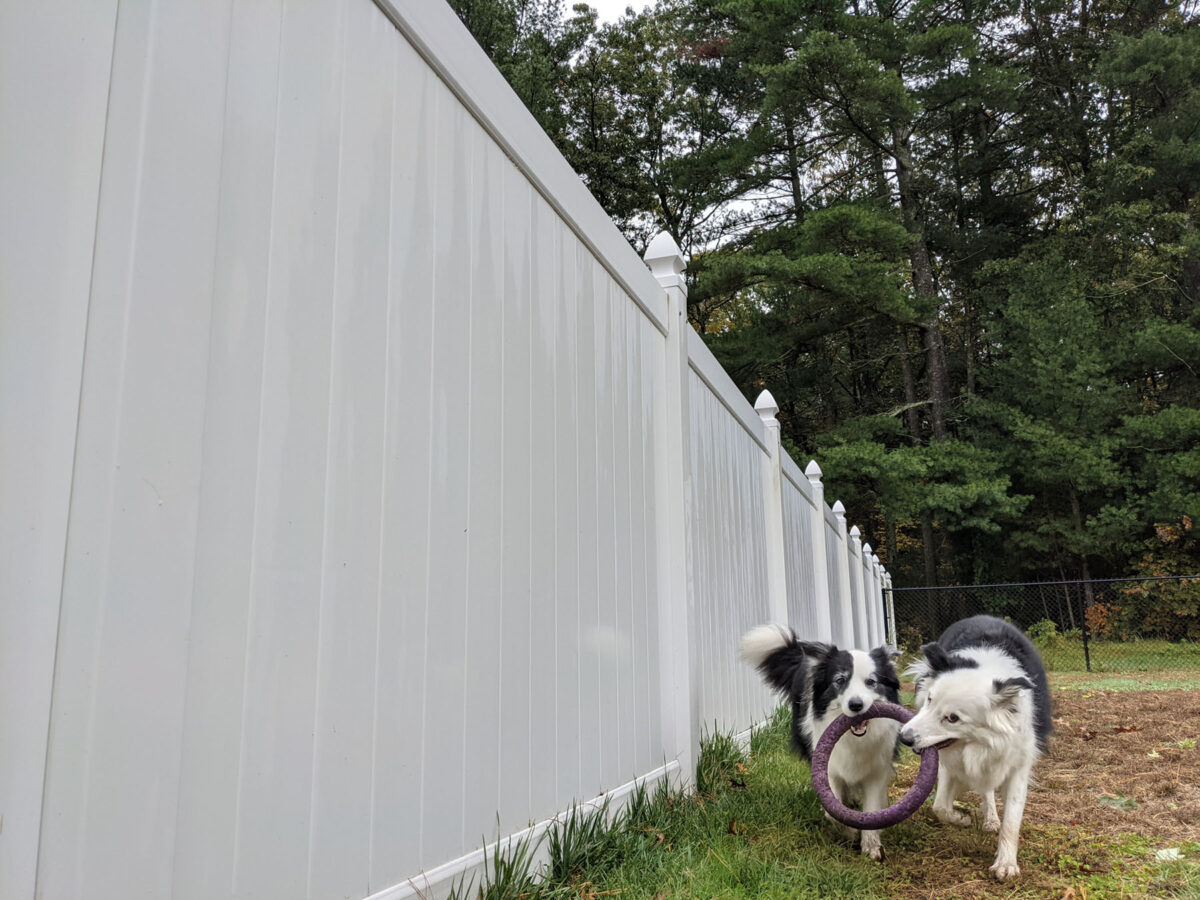The idea of having an open lawn—a requirement in some communities for aesthetic reasons—and still being able to keep your dog from roaming is enticing. Electric, in-ground fence systems cost less to install than traditional fencing and they may meet the requirements of your homeowners association. But the cost to your dog can be much higher. Here’s why you shouldn’t use them.
For some dogs, their main opportunity to potty and explore the outdoors is in a yard closed off by electronic containment. This type of “fence” functions by using a threat of pain. The animal learns that they will receive a shock unless they stop and move back from the boundary line. The subsequent fear, anxiety, and stress cause the animal to avoid crossing the line.
That may sound beneficial—who doesn’t want to keep their dog from leaving the safety of the yard?—but use of these fences comes with numerous downsides. Here’s what to consider before deciding to install one at your home.
Fearful association with passersby. Electric in-ground fences pose the possibility of unintended negative associations with people or other dogs passing by the fence line, particularly if they were present at a time when the dog received a shock. This can cause increased conflict, frustration, and fear that the dog can associate with the yard itself and/or the mere presence of people, dogs and other stimuli.
The threat of pain is always there. While dogs can learn to tolerate electric fences by learning to navigate within the given boundaries to avoid the associated shock, the threat of pain always remains.
The shock must be fairly significant and painful. To deter dogs from venturing across the boundary, the shock must be severe enough to startle and alarm them. Many electric fence companies compare the shock the dog receives to the type of static electric shock we feel when we walk across carpet and then touch a metal door handle, but to really act as a deterrent, the shock must be more substantial than that.
They don’t always contain the dog. Some dogs choose to venture beyond the boundary line regardless of the shock, because they’re so motivated and emotionally charged in that moment that what lies on the other side of the boundary is worth the momentary zap the dog may feel. In situations when an animal is highly stressed or overly excited, normal bodily responses, including perception of pain, may be momentarily dulled, enabling the dog to burst through the boundary line. Getting the dog to then willingly approach the place where they received the shock is highly unlikely, meaning once the pet is out, they’re going to be more difficult to catch and bring back onto the property.
They don’t keep other animals out. The electric fence is designed to keep a dog inside the boundary but is not designed to keep other animals or people out of the yard. With no physical fence present, wild animals, other dogs, or people are free to enter the dog’s yard space at any time. Because there’s nothing stopping a threat or perceived threat from entering the yard, the dog wearing the shock collar is essentially “trapped” in his yard with no means of escape, no matter how afraid or uncomfortable he is.
Dogs can learn that the fence only works “sometimes.” Dogs can become wise to the fence and learn that it works only when they are wearing the collar. They can also learn to test the line and will break through in the event the system is out, such as with a bad battery or an outage in the line.
Fear of people in the yard. Dogs may feel some stress with people around areas where they have received warnings or shocks in the past. That’s because pain creates negative emotions that can be associated with stimuli that may include the presence of people in their potty space.
Indoor electric containment systems. The same conflicts apply to invisible boundaries present within the home. Some families set up electric boundaries to keep the animal away from areas such as the kitchen or furniture. In these spaces, negative associations paired with people are all the more likely to be heightened and the animal’s defensive response may be all the more intensified as they likely have less space to move away when feeling conflicted.
The last word. Fear Free advises against electric fences, as they work by using an aversive stimulus (shock) that causes fear, anxiety, and stress. Instead, Fear Free recommends putting up a physical fence or actively supervising dogs while they’re on a leash, long line, or tether.
This article was reviewed/edited by board-certified veterinary behaviorist Dr. Kenneth Martin and/or veterinary technician specialist in behavior Debbie Martin, LVT.








